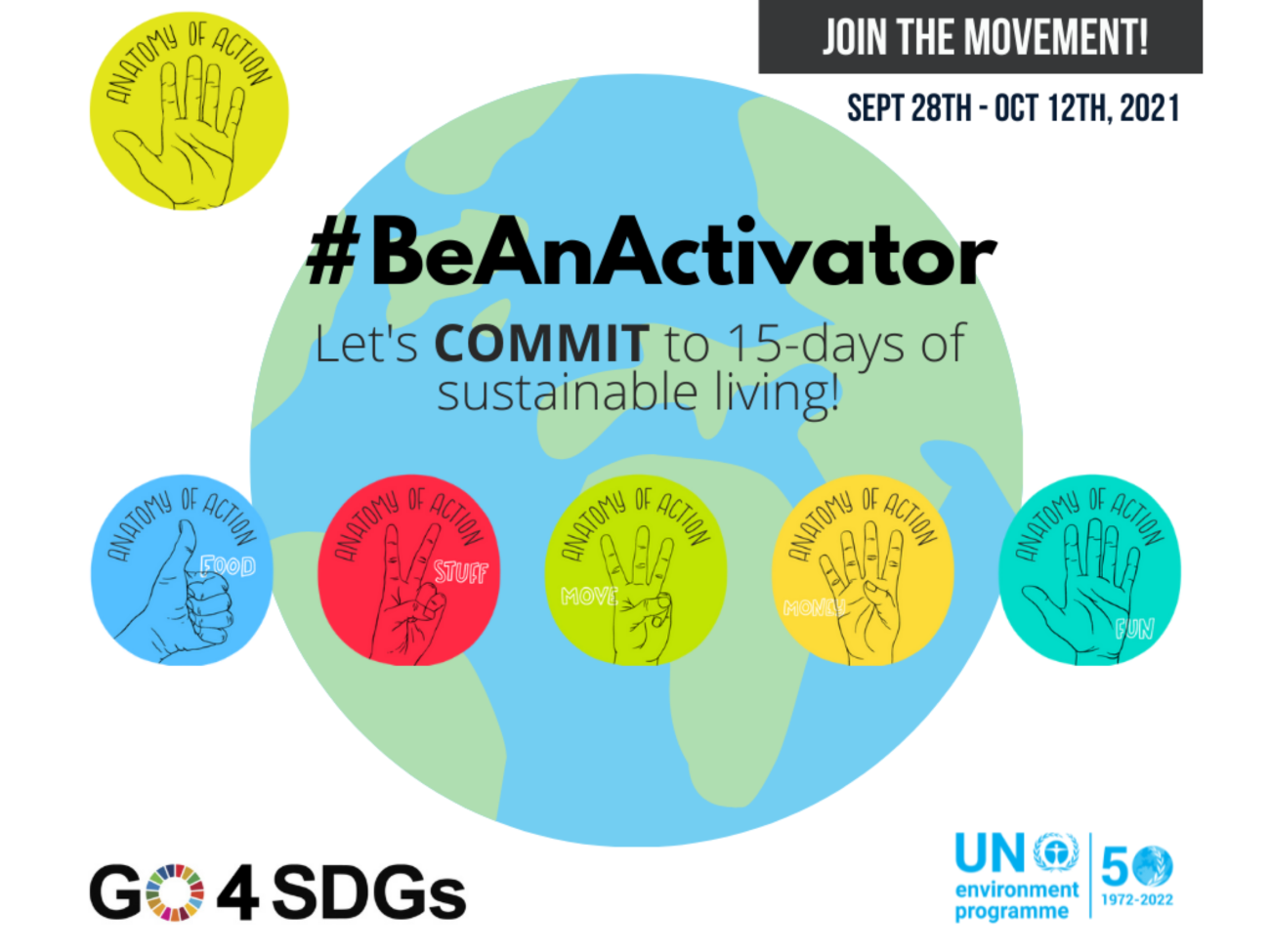Where: Online | Social Media Challenge
Register: https://bit.ly/36PfIXu
Households are responsible for approximately 70% of GhG emissions [i], and impacts on nature and biodiversity are equally daunting [ii]. To keep within global warming targets and to meet 2030 and 2050 targets, we will all have to live better and lighter. New and digital technologies, more data and increased sustainability awareness may help but we need to rethink how we eat, move, live and play and redesign the systems that underpin these decisions [iii].
The evidence is clear on what to do at a macro level [iv]. Individually, because lifestyles vary across the planet, we can start by exploring what we can and are already doing to live more sustainability. Everyday actions can be powerful yet simple: swapping the protein we eat, buying better; treasuring clothes and electronics for longer, and choosing experiences.
The All Hands on Deck media challenge, based on the Anatomy of Action [v] approach, works through organizations and networks involved in climate, nature, youth, education and sustainable development to galvanize, one effective voice of change and to create an aspirational mosaic of what sustainable living already looks like [vi]. UNEP’s Sustainable Lifestyles team supports partners, aggregates results and helps feed messaging into key (policy) events. As of July 2021, the challenge has reached 9.4 million and is going strong! The challenges build momentum towards the 50th UNEP anniversary and Stockholm +50 in 2022 [vii].
By taking part in this challenge, all participants and influencers can have a positive impact within their community and contribute to a global movement targeting policy makers around the world in 2022.
Access the evidence, the actions and all social media materials in English, French, Spanish and Arabic, Chinese and Russian, here. The Anatomy of Action is in support of Act Now.
Follow on Instagram @TheOfficialAnatomyofAction, #AnatomyofAction #ActNow #GlobalGoals
[i] ACS Publications – Carbon footprint of nations: A global trade-linked analysis, 2009
[ii] When it comes to nature and biodiversity, lifestyles have a huge impact – especially around
what we eat. Agriculture accounts for 80% of land-use change globally [iii], and is identified as a
threat to 24,000 of the 28,000 species documented by IUCN to be at risk of extinction [iv].
Livestock and its feed takes up approx. 80% of global agricultural land yet produces <20% of
the world’s calories [v]. Finally, it is estimated that 11% of all food produced is lost or wasted at
household level [vi].
[iii] households in developed economies need to reduce their carbon footprint by around 80%. By 2050, emerging economies will also have to reduce
their impacts by about 60% for Brazil and about 45% for India [ii].
[iv] Anatomy of Action Validation Report
[v] One Planet Network: Anatomy of Action
[vi] In 2021, efforts target high-level (youth focused) events such as IUCN Global Congress and the United Nations Climate Change Conference (COP26)
and harness the energy of youth around the world to make a difference.
[vii] UNEP @50




